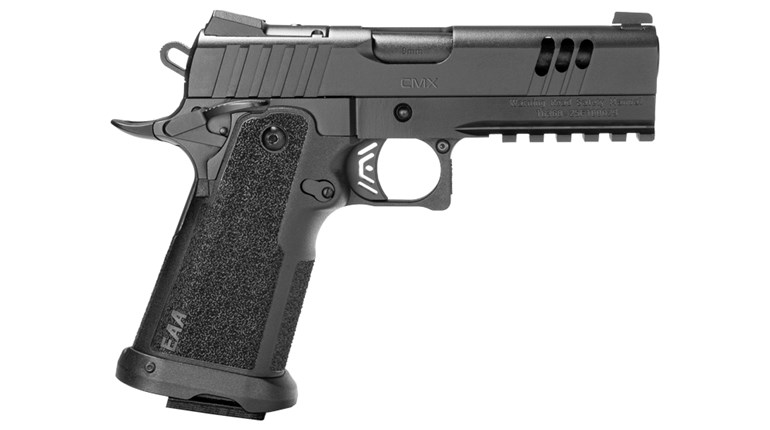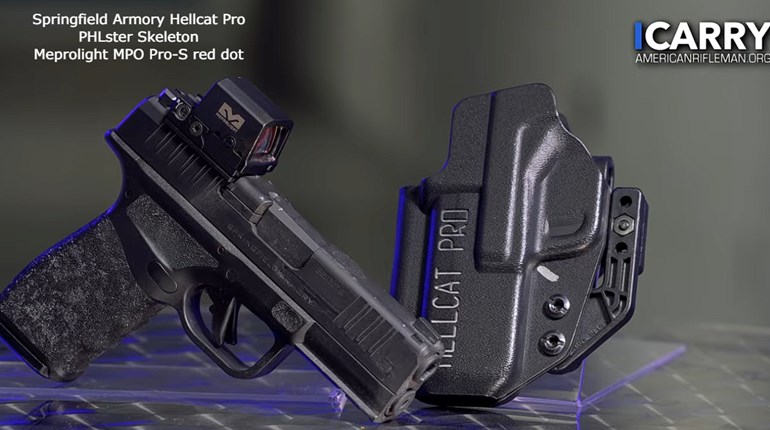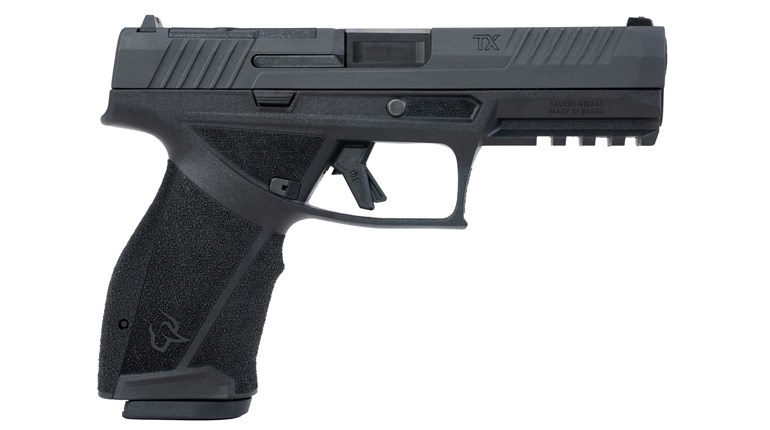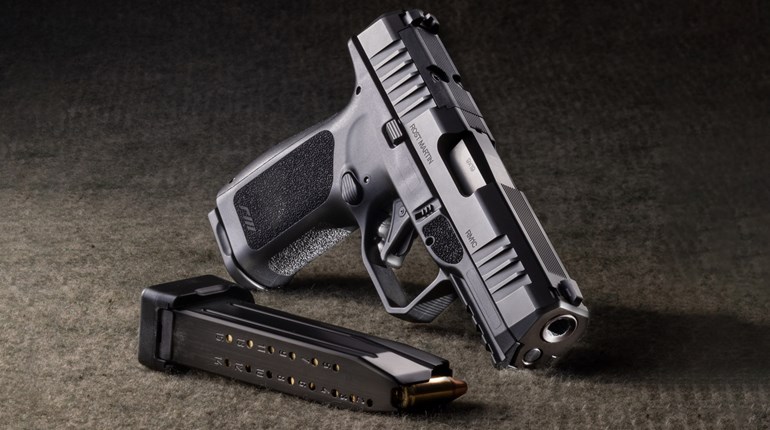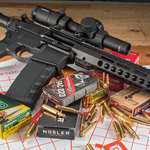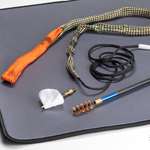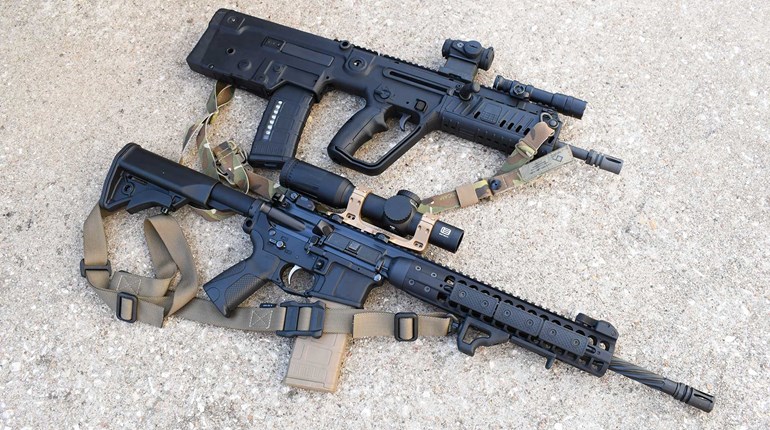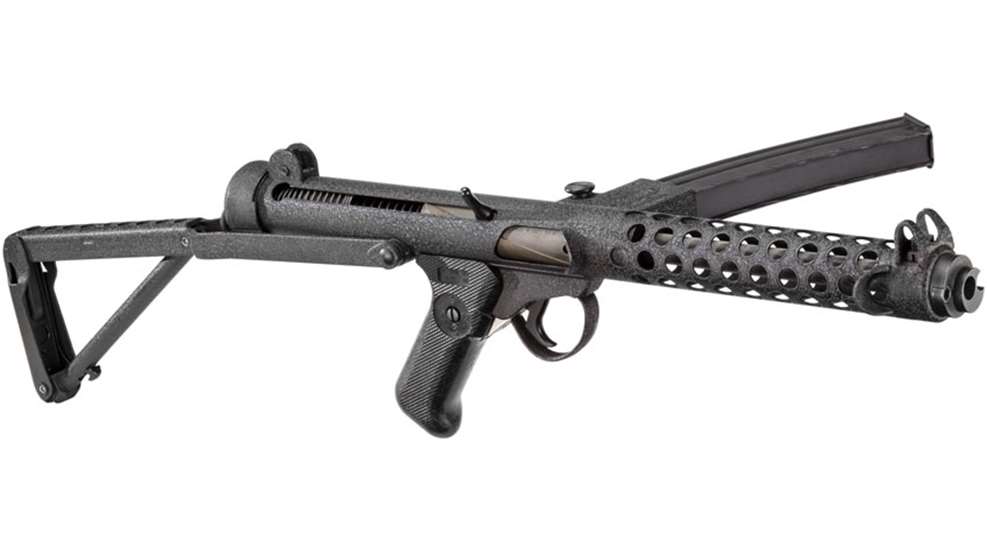
During the closing weeks of the Second World War, Free French and British SAS troops carried out an operation in the Netherlands codenamed Operation AMHERST. The mission had the objective of attacking and capturing a series of airfields, bridges and canals in an area 80 miles northeast of Amsterdam. The men who participated in this operation carried two submachine guns in combat—the M1928A1 Thompson and a new design that presented an altogether different appearance. This new Sterling submachine gun (SMG), featuring a unique underfolding stock and straight-walled, side-feeding, detachable-box magazines, can be seen in at least one photograph snapped during a lull in the wartime fighting.
The design came from the mind of George William Patchett, the chief engineer at the Sterling Armaments Company of Dagenham, near London. It fired the 9 mm cartridge from an open bolt and offered a dramatic improvement in accuracy over Thompson and Sten SMGs. Weighing only 6 pounds, Patchett’s Sterling submachine gun was more than 1 pound lighter than the Sten and, because it was only 18.6-inches long with the stock folded, the Patchett was also much more compact as well. In addition to that, it produced greater accuracy than the Sten and used Sten magazines, so it was inarguably an improvement in every category. But the Patchetts used during Operation AMHERST were from a pre-production batch of 120 guns, and the war was quickly coming to an end. With plenty of Stens already on hand and the suddenly reduced need resulting from the post-war peace, George Patchett’s new Sterling submachine gun was not officially adopted during the Second World War.
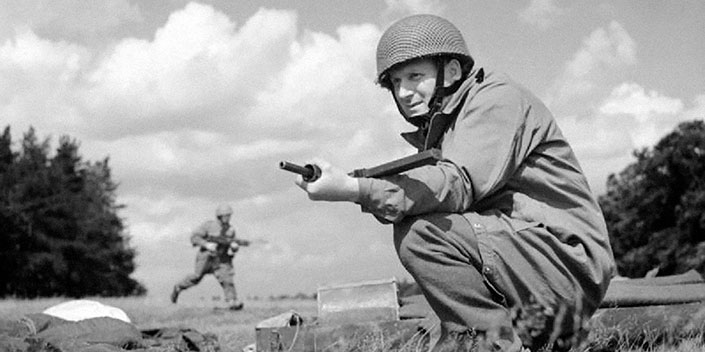
Times change and needs change, and the United Kingdom eventually adopted an improved version of the Patchett in 1951 under the designation L2A1. Although it looked similar to the World War II Patchett, the Sterling submachine gun model that went into full-scale production incorporated a redesigned magazine. Since that device constituted the Sten’s primary weakness, the L2A1 was paired with a curved 34-round, double-column magazine capable of feeding from alternating sides. To reduce cartridge friction inside the magazine, the follower was replaced with a pair of rollers—an innovation that produced magnificent reliability. Soon after the new firearm went into production in Dagenham, the corporate name of the manufacturer began to eclipse the designer’s name, and the innovative little 9 mm SMG inevitably came to be known as the Sterling Mk. 2 submachine gun.
By 1953, the L2A1 was beginning to replace the obsolescent Sten guns that had fought World War II. By 1955, another modified version was introduced under the designation L2A2/Sterling Mk. 3. Then in 1956, still another modification went into production at Dagenham: the L2A3/Sterling Mk. 4, which would remain in production for the next three decades. In 1966 Sterling produced an integrally suppressed version of the L2A3 under the designation L34A1/Mk. 5 to provide special operations forces with a stealthy entry weapon.

Through the years of its U.K. military service, the Sterling submachine gun stood out as a paragon of rugged reliability, which is the primary reason why it lasted as long as it did. During a time when most militaries began turning away from pistol-caliber, open-bolt submachine guns, the Sterling soldiered on from the Suez Crisis in 1956, to the Falklands War in 1982. In fact it was during that conflict that the Sterling fought for both sides, with U.K. troops using the L2A3 and Argentine Navy Commandos using the L34A1. Over 50 nations—from Australia to Zimbabwe—have issued the Sterling to their military forces and police, and in some places it continues to serve to this day.
In the U.S.A. it enjoys popularity among recreational shooters and collectors. NFA-registered, selective-fire Sterlings are available, as well as a variety of closed-bolt, semi-auto-only pistols and carbines. This gun’s success even reached a galaxy far, far away back in the late 1970s when the motion picture “Star Wars” transformed a large number of surplus L2A3s into the BlasTech E-11 Blasters used by Imperial Stormtroopers. From Operation AMHERST all the way to the Death Star, the Sterling submachine gun is truly a classic.












